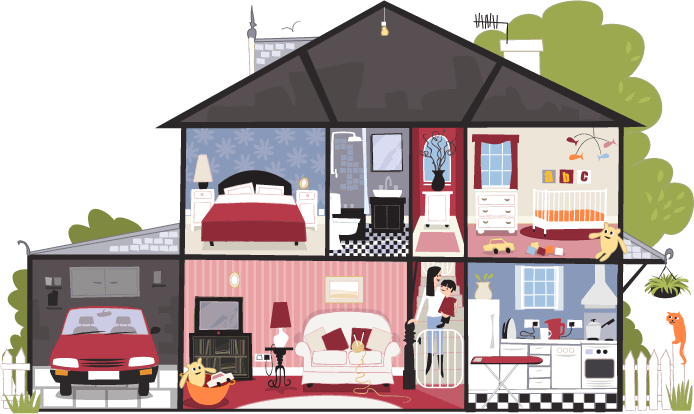Home, the safest place in the world. But with babies growing up to become notorious toddlers, even the safest place needs to be toddler-proofed!
Supervision is the best way to prevent injuries, in the home and out, but even the most watchful parents can’t keep kids completely out of harm’s way every second of the day.
So if you have a growing baby at home, here area few safety measures that you can take to childproof your home.
The Kitchen
- Install safety latches on all cabinets and drawers to keep children from household products. Anything you know to be poisonous, place out of reach of children and lock it up.
- Store household products and medicine away from food and beverages.
- Use the stove’s back burners and turn pot handles toward the back of the stove to keep hot pots and pans out of the reach of children.
- Keep kitchenware and appliances out of reach and away from the edge of counters and tables.
- Put visual reminders from poison prevention centers on potential poisonous or hazardous items.
The Bathroom
- Install safety latches on cabinets and drawers to keep children from potentially poisonous household products.
- Store medicines and other products in their original containers.
- Install toilet locks to keep toilet lids closed. Children are more top-heavy than adults and can lean and fall into a toilet easily. They also can drown in just one inch of water.
- Unplug hair dryers and electric rollers after use to prevent electrocution from contact with water in the bathroom. Also keep them away from curious children to prevent burns.
- Cover unused electrical outlets with outlet protectors or safety caps. Make sure outlets in the bathroom and kitchen — or near any water source — are updated with ground fault circuit interrupters (GFCIs), which turn off electricity if appliances fall into water. For outlets in use, especially those low to the ground, there are devices, which make it difficult to pull out plugs.
Around the House
- Use safety gates at the top and bottom of stairs and in the doorways of rooms with hazards. Gates with expanding pressure bars should not be used for the top of staircases. Use gates hardware-mounted to the doorframe instead.
- Use doorknob covers to keep children away from rooms and other areas with hazards, such as swimming pools. Be careful, though, that these devices are easy for adults to use in case of emergency.
- Put corner and edge bumpers on furniture and other items like a fireplace hearth to protect against injury.
- Place furniture away from high windows so children won’t climb onto windowsills. Screens aren’t strong enough to keep children from falling through windows.
- Make sure window blinds do not have looped cords – they can be strangulation hazards for children. Also, always lock blinds into position whether they are all the way up or down.
- Remove free-falling lids from toy chests, which should have lids that stay open or very light, removable ones.
- Prevent furniture from tipping by securing bookcases, shelving, and heavy furniture to walls with brackets and anchors. When storing items, put heavier items on bottom shelves and in bottom drawers.

